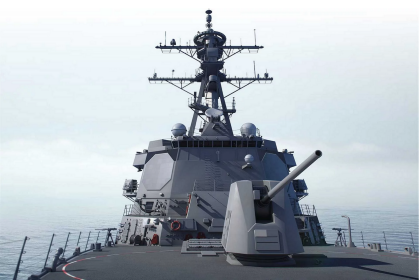A Myriad of Factors and Options Influence Choice
Making decisions when designing electronics systems is a series of checks and balances, requiring a degree of knowledge on how to offset certain parameters when accommodating other ones. Often overlooked is the actual cabinet design, and how it can impact overall system reliability and ease of use.
While attributes like reliability, ruggedization and durability have always been critical factors in a cabinet’s design, the nature of each has changed. The amount of heat, the density of electronics and the wide-ranging demands of environmental factors far surpasses the requirements of the types of systems designed just a few decades ago.
In fact, the trend is to put electronics into a greater number of exposed applications continues to grow. In tandem with the change in design and purpose of enclosures, a shift in the importance of some technical features has also taken place. A few noteworthy examples can be found in manufacturing, transportation and broadcast applications as well in test equipment, where environments are not the same as what you’d typically find in a central office or server room.
From a practical standpoint, having the flexibility to construct a housing that fits the space and application needs, while ensuring these highly compact systems can reliably transfer large quantities of sensitive data is a critical consideration. Making informed decisions about your enclosure design doesn’t need to be a frustrating event. (Figure 1)

Custom Configuration at Your Fingertips
With a growing number of features in enclosure design, system engineers need an easy, reliable method for making sense of certain design choices and to understand the nuances of cabinet design. To aid in this quandary, Elma provides designers with the ability to configure a cabinet online, in real time, using a decision-based, logic tree approach that steps engineers through the features and options that will work well within an intended application.
What features are most important, and how will that affect the cabinet’s design? Is a door needed at the front or at the back? Do you need MIL-level shielding, or will basic suffice? What accessories are needed to complete the installation?
These answers can be determined, and features can be analyzed, prior to purchasing an enclosure, ensuring the design will fit your application needs. Accessing the cabinet configurator is easy; just head over to Cabinets & Racks , select the item you want to customize, then click the configuration button to open the configurator! (Figure 2)

Once your options are selected, you have a specific configuration key that enables you to talk with an Elma design expert and obtain a straight-up cost for the cabinet you need. Plus, you have the peace of mind knowing it fits your application.
Rely on Proven Methods & Expertise
As the uses and capacity of computing systems evolved, the racks and enclosures that hold everything in place have also changed. Whereas, at one time, there was only a need for a limited number of sizes and configurations, today’s computing systems are being defined by the specific environment, not always the application itself.
Having an easy way to design a reliable, custom enclosure ensures your project stays on track and your system will operated effectively for years to come. Meeting application requirements means careful consideration of specific design criteria and associated costs and identifying requirements upfront goes a long way in developing the proper enclosure system.
These answers can be determined, and features can be analyzed, prior to purchasing an enclosure, ensuring the design will fit your application needs. Accessing the cabinet configurator is easy; just head over to Cabinets & Racks , select the item you want to customize, then click the configuration button to open the configurator! (Figure 2)

